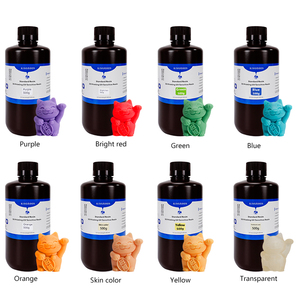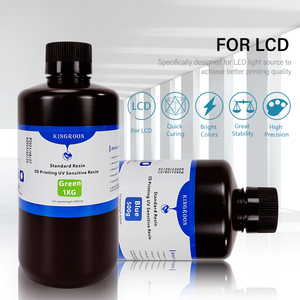
All categories
Featured selections
Trade Assurance
Buyer Central
Help Center
Get the app
Become a supplier

(1397 products available)







































polyester resin for filler are a fundamental component in the realm of polymers, serving as the backbone for numerous applications across diverse industries. These materials are derived from chemical processes that involve the polymerization of monomers, resulting in large, chain-like molecules. The inherent properties of polyester resin for filler such as strength, flexibility, and resistance to chemicals, make them indispensable in manufacturing, construction, healthcare, and more. As global industries strive for innovation and sustainability, the development and utilization of polyester resin for filler continue to evolve, offering solutions that meet modern demands and environmental considerations.
There exists a wide array of polyester resin for filler types, each tailored to specific applications and performance criteria. Thermoplastics, elastomers, and thermosetting polymers are among the most common categories. Thermoplastics, such as polyethylene and polypropylene, are known for their ability to be melted and reformed, making them ideal for recycling and reshaping applications. Elastomers, including natural rubber and synthetic rubber, are prized for their elasticity and resilience, often used in products like tires and seals. Thermosetting polymers, such as epoxy and phenolic resins, are renowned for their heat resistance and structural integrity, crucial in electronics and automotive industries. Each type of polyester resin for filler offers unique benefits and limitations, ensuring tailored solutions for specific industrial needs.
polyester resin for filler are characterized by several functional attributes that enhance their utility across various sectors. Their ability to withstand extreme temperatures, resist corrosion, and provide electrical insulation makes them vital in engineering and electronics. The lightweight nature of many polyester resin for filler contributes to energy efficiency in transportation and aerospace applications. Additionally, the versatility in processing methods, such as injection molding and extrusion, allows for intricate designs and complex shapes. This adaptability is crucial in medical devices, consumer electronics, and packaging solutions. The continuous advancement in polymer technology aims to improve the biodegradability and recyclability of polyester resin for filler, aligning with global sustainability goals.
The formulation of polyester resin for filler involves a combination of monomers and additives, designed to achieve specific physical and chemical properties. Monomers like ethylene, propylene, and styrene serve as the building blocks, while additives such as plasticizers, stabilizers, and fillers enhance performance characteristics. Plasticizers increase flexibility, stabilizers protect against UV radiation, and fillers improve strength and reduce costs. The precise composition of polyester resin for filler determines attributes such as tensile strength, thermal stability, and transparency, catering to different industrial applications. In response to environmental concerns, research is focusing on bio-based monomers and sustainable additives to reduce the ecological footprint of polyester resin for filler.
Maximizing the potential of polyester resin for filler requires understanding their specific properties and application scenarios. Selection of the appropriate polymer type is crucial, considering factors like load-bearing capacity, environmental exposure, and desired lifespan. For instance, using thermoplastics for products requiring frequent reshaping or elastomers for applications demanding high elasticity. Proper handling and processing techniques, such as temperature control and pressure settings, are essential to maintain the integrity and performance of polyester resin for filler. Moreover, integrating recycling practices and exploring biodegradable options can significantly contribute to sustainable development. Educating industries on the efficient use and disposal of polyester resin for filler is imperative for minimizing environmental impact and enhancing resource conservation.
When selecting the appropriate polyester resin for filler for your application, it is essential to consider the specific requirements and environmental conditions it will encounter. Factors such as mechanical strength, thermal stability, and chemical resistance should guide your choice. For example, applications requiring high tensile strength and durability might benefit from thermosetting polymers, while those needing flexibility and elasticity could utilize elastomers. Additionally, the processing method, such as extrusion or injection molding, can influence the selection of polyester resin for filler, as different polymers respond uniquely to these techniques. Understanding the nuances of each polymer type ensures optimal performance and longevity in your intended application.
The decision-making process for choosing polyester resin for filler also involves evaluating the economic and environmental impacts. Cost-effectiveness is a crucial consideration, as the price of raw materials and manufacturing processes can vary significantly among different polymers. Furthermore, the environmental footprint of polyester resin for filler is increasingly important, with a growing emphasis on sustainability. Selecting polymers made from bio-based materials or those that are easily recyclable can reduce environmental impact. Assessing the lifecycle of the product, from production to disposal, helps in making informed decisions that align with both economic and environmental goals.
In medical applications, polyester resin for filler must meet stringent biocompatibility and sterilization requirements. It's crucial to select polymers that do not react adversely with biological tissues and can withstand sterilization processes like autoclaving or gamma irradiation. Additionally, transparency and flexibility may be important for specific medical devices, influencing the choice of polyester resin for filler. Regulatory compliance with standards such as ISO and FDA is also a significant factor in the selection process.
Environmental conditions such as temperature, humidity, and exposure to chemicals can significantly impact the performance of polyester resin for filler. High temperatures may lead to thermal degradation, while exposure to UV light can cause polymer chains to break down, affecting durability. Selecting polymers with appropriate resistance to these conditions is essential for maintaining integrity and functionality. Conducting thorough environmental testing helps ensure that the chosen polymer will perform reliably under anticipated conditions.
Yes, polyester resin for filler can be customized through the incorporation of additives and fillers to enhance properties such as strength, flexibility, and resistance to environmental factors. For instance, adding plasticizers can increase flexibility, while stabilizers can improve UV resistance. Customization allows for the tailoring of polymers to meet specific application requirements, offering a versatile solution to complex challenges.
Recycling polyester resin for filler poses several challenges, including the separation and identification of different polymer types. Contamination with other materials can complicate the recycling process, reducing the quality of the recycled product. Additionally, some polymers degrade in quality after repeated recycling cycles, limiting their reuse. Advances in recycling technology and improved sorting methods are crucial for overcoming these challenges and enhancing the recyclability of polymers.
The choice of polyester resin for filler can significantly influence product design by dictating factors such as weight, strength, and flexibility. Lightweight polymers can reduce overall product weight, enhancing portability and energy efficiency, particularly in automotive and aerospace applications. The design process must account for the physical properties of the polymer to ensure that the final product meets performance and aesthetic expectations. Collaboration between material scientists and design engineers is vital to optimizing the use of polymers in innovative product designs.